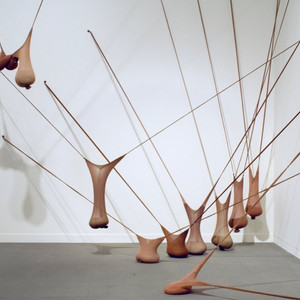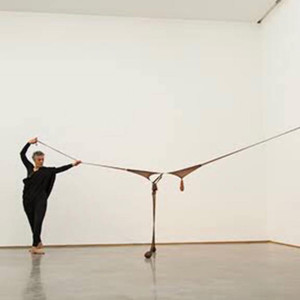Senga Nengudi
- Monica Blignaut
- Aug 26, 2019
- 2 min read

Artist 190
Senga Nengudi
Abstract Sculptures
Performing Art
Senga Nengudi (born 1943) is an African-American visual artist best known for her abstract sculptures that combine found objects and choreographed performance.
She is part of a group of African-American avant-garde artists working in New York and Los Angeles from the 1960s onward.
In the 1960s and ‘70s, Nengudi was an elemental force in New York’s and Los Angeles’ radical, avant-garde black art scenes, though her acclaim never quite spread to the mainstream.
Along with artists David Hammons and Maren Hassinger, she formed Studio Z, an artist collective that shared a love for abandoned materials and overlooked spaces.
The collective often wore costumes and carried instruments to improvise performances at unlikely locales like freeway underpasses or abandoned schools.
Nengudi’s most iconic sculptural performance project, called “R.S.V.P.,” featured pantyhose as a central material. Exploring the everyday object’s relationship to skin, constriction, elasticity and femininity, Nengudi stretched and warped the sheer undergarments so they resembled sagging body parts and abstract diagrams.
She’d often recruit collaborator Hassinger to activate the sculptures by dancing through them, privileging improvisation as the mode of ritual.
“When we were kicked off the boat, improvisation was the survival tool: to act in the moment, to figure something out that hadn’t been done before; to live,” Nengudi told Hyperallergic. “And the tradition goes through Jazz. Jazz is the perfect manifestation of constant improvisation. It has to be in place at all times. Constant adjustment in a hostile environment, you have to figure something out right away.”
I love how she combines not only the relationship of skin and identity with the ordinary material of stockings but interacts with them in the work. She transforms them into the other an almost symbolic relationship of the fight of beauty standards placed on women in society. Especially how the body of women of colour is critiqued.
Sources Consulted:
https://m.huffpost.com/…/e…/us_58a499b2e4b094a129f1513c/amp…
https://en.m.wikipedia.org/wiki/Senga_Nengudi

















Comments